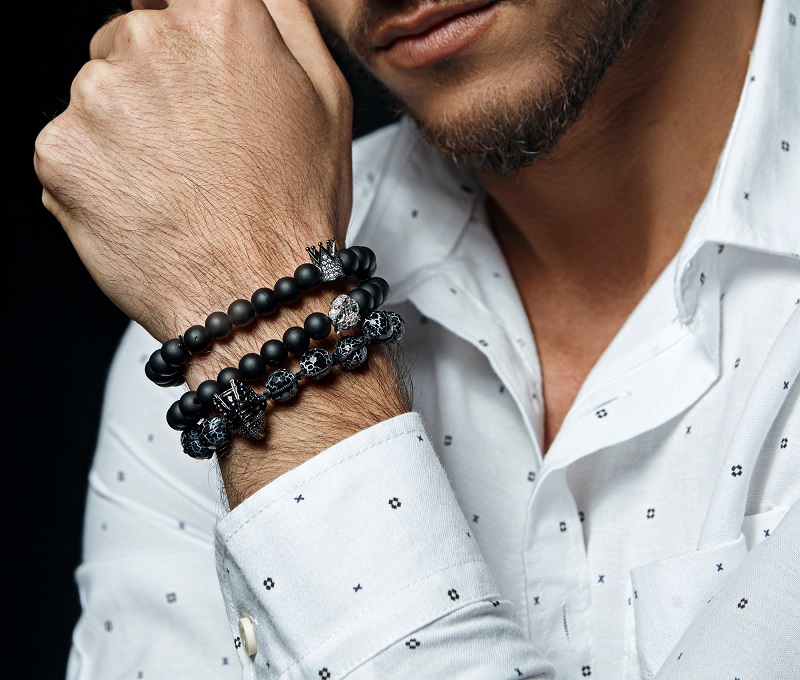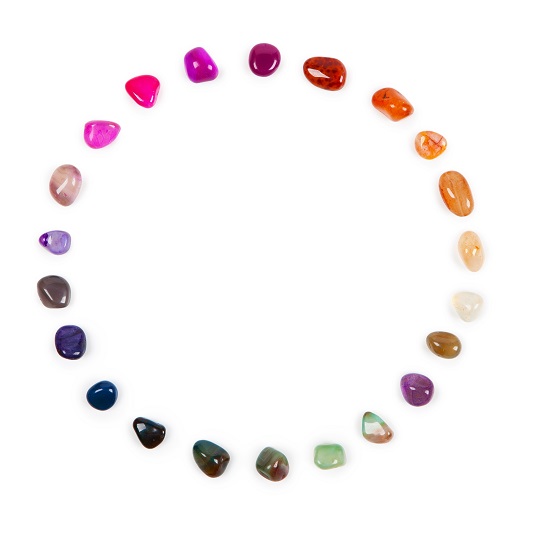Gemstone of the Week: Malachite

Your Complete Guide to Platinum
21st July 2017
Amulet Jewellery: History and Use of Amulets
21st July 2017
Highly regarded in both gemstone and sculpture form for thousands of years, Malachite is a formerly popular but now somewhat neglected stone with a striking, varying green colour palette and distinct banding. As well as its beauty, Malachite has an array of physical and emotional healing properties, as well being a natural colourant. Traditionally, it was one of the first ores used to create copper metal.
In their book, The Book of Stones: Who They Are and What They Teach (2005), authors and gemstone enthusiasts Naisha Ahsian and Robert Simmons delve into Malachite’s rich history. They write: “In the Middle Ages, Malachite was believed to protect against the evil eye and to cure various types of stomach ailments.” Adding: “The Russian czars used Malachite from the large deposit in the Urals to produce ornaments and panelling for their castles, as well as intricate inlay work.” And why was Malachite so prized? “Malachite is one of the most valuable stones for protection from negative energies. It permeates the auric field with positive vibrations and strengthens the natural energetic ‘shell’ which can screen out hostile forces.” Consequently, Malachite helps to protect your well-being.
Since the ancient Egyptians first mined it, one of Malachite’s primary uses was as a mineral pigment in green paints. It was also carved to create decorative objects such as vases – there is a large Malachite vase housed in the Malachite Room at the State Hermitage Museum in Saint Petersburg, Russia. Founded in 1754 by Catherine the Great, the Hermitage is one of the world’s oldest museums.
How to Identify Malachite
Malachite is easily recognisable thanks to its striking green colour; the stone is always green, but the shade of green varies considerably from pastel green to an emerald green and through to near-black.
Whole Malachite gems are a rarity – typically, Malachite is present in copper deposits, often mixed with Azurite. When found whole, it appears as a green, cauliflower-like rock, although some stones are more refined. Malachite has a medley of varying shades of green and is translucent. Inside, Malachite has persistent banding which may also feature as concentric circles depending on the cut.
Today, Malachite often features in beaded jewellery or as a large cabochon on a necklace or ring. Real Malachite does not fade over time or when exposed to light. From a retail perspective, there are several characteristics to look for when shopping for Malachite. Firstly, real Malachite is cold, hard and heavy – much heavier than plastic. It will always have distinctive banding inside and, throughout, colours will vary; if the colours are consistent, it most probably means the stone is an imitation. You can also feel the heat of the stone to determine whether your Malachite is genuine – like many gemstones, real Malachite will not heat up all that much, even if you hold it in your hand for a minute.
It is common for cheap jewellery to use fake Malachite; many manufacturers opt for plastic or glass imitations. As mentioned, you can tell the difference between genuine and fake Malachite as imitation Malachite is much lighter and, if not already warm to the touch, will warm up when held in your hand.
Different Colours and Types of Malachite
Some gemstones have dozens of potential colour variations, but not Malachite. Unless mixed with other copper minerals, Malachite is always green and always has banding or concentric circles in varying green tones, ranging from pastel through emerald to an almost black shade of dark green.
Sometimes, Malachite mixes with other copper minerals such as Azurite, Chrysocolla and Turquoise. In which case, the stone becomes an even more favourable mixture of colours as a palette of green and varying blue tones come together. Mixed Malachite will appear inconsistent in tone and, often, have irregular patches of green and blue. Turquoise may even feature subtle specks of Malachite.
Where is Malachite Found?
As mentioned earlier, in their book Ahsian and Simmons write: “Today, the most important Malachite source is Zaire [Democratic Republic of Congo]. Other Malachite deposits are in Australia, Chile, South Africa and the USA.” And they’re not wrong. However, rather than having separate Malachite mines, which wouldn’t be economically viable due to Malachite’s rarity, producers rely on copper mines.
Russia has also been an enormous source of Malachite. The Demidoff Malachite Mine in south-east Russia was once one of the largest Malachite mines in the world. In the early 19th-century, at around 70 tonnes, “the largest mass of Malachite ever known” was found in the Demidoff Malachite Mine.
Healing Properties of Malachite
First and foremost, it’s essential that you only handle Malachite in its polished form as, in any other form, Malachite is incredibly toxic – never breathe Malachite dust or powder. Providing you’ve got your hands on a polished Malachite gemstone or Malachite jewellery, the stone has numerous physical and emotional healing properties. It is particularly useful for women as Malachite helps to regulate the menstrual cycle, reduce cramps, and even ease labour; often, it’s referred to as the Midwife Stone. Malachite also helps to relieve a variety of common ailments such as cold sweats and digestive problems, as well as travel sickness. Emotionally, Malachite is a stone of transformation; it encourages risk-taking and expression as well as boosting confidence. This gem has also been found to help combat depression and anxiety which, ultimately, will ensure you’re both healthy and happy.
In Summary
Malachite is a breathtaking gemstone famed for its use in decorative objects for thousands of years. It is found in copper mines around the world and features a distinct green palette and attractive banding. When shopping for genuine Malachite, always ensure the stone is cold to the touch, does not warm up when held, and is somewhat heavy. You can lay polished Malachite stones on your body or wear Malachite jewellery to combat depression and anxiety, as well as to ease cramps and labour.




